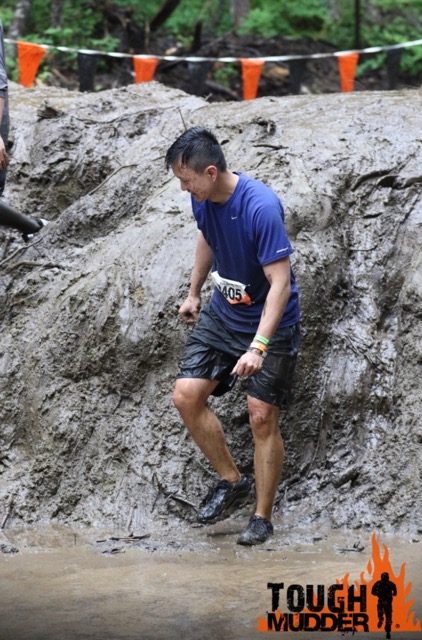Tough Mudder Challenge

In the last 5 years, mud runs have become a mainstream activity for people to physically and mentally challenge themselves. In June, I ran my first mud run in Whistler, the Tough Mudder. The course was just short of 18 km with 19 obstacles scattered in the hilly and muddy Whistler terrain. The obstacles range from scaling 10 foot walls, walking through knee deep mud water to running through a field of live wires. Combine all of that with a cold and rainy day, it definitely was a challenge! Having said that, finishing the course gave a great sense of satisfaction and accomplishment. Here are some tips for a successful and injury-free mud run:
Run
First and foremost, run! The course can range from 16 to 20 km depending on the year and location. You do not need to train to run a full 20 km as you’ll be stopping every 1 to 2 kilometers to do an obstacle. I would recommend making a goal of running 8 to 10 kilometers.
High Intensity Interval Training (HIIT)
HIIT is a form of exercise that incorporates short durations of high intensity exercises followed by short rest periods and then repeated. These workouts tend to last from 4 to 30 minutes. Research has shown that HIIT provides a range of health benefits like improving aerobic capacity, burn fat, improve insulin tolerance by increasing your resting metabolic rate. Talk to your physiotherapist or health care professional about a HIIT program that fits you.
Body weight training
Mud runs will require all sorts of movements like lunging, crawling, climbing and pull ups. While it’s handy to use weights to increase strength, try doing basic movements with body weight but in high reps. I recommend people try doing 30 reps as long as you can hold your form. Another way to increase exercise difficulty is to add in fast movements like jumps and sprints.
Grip strength
One of more feared obstacles that I faced was doing monkey bars. Remembering how easy it was to do them as a kid, I was shocked at how difficult it is now. Getting your hands used to hanging for obstacles like the monkey bars, scaling walls and ladder is definitely recommended. Start by simply hanging from a bar. Practice both overhand and underhand grips. Progress to hanging knee raises and assisted pull ups.
Flexibility
Working on your flexibility a few months before the event will help with both your performance and injury prevention. Think about reaching for things with ease or getting low to the ground with feeling your muscles pulling against you. Being more flexible helps to improve the elastic potential in your muscles and getting through tight spaces. Having more length in your muscles also gives your soft tissues more slack to avoid muscle and ligament injury. Try holding your stretches for a minimum of 30 seconds and progress your hold time from there.
Training a few months beforehand can make your mud run experience that much more enjoyable and safe. At PhysioWorks, our physiotherapists offer Active Rehabilitation sessions that can provide you with a full body mechanical assessment and a custom exercise program that addresses your goals or muscle imbalances. Feel free to contact us if you have any questions.
Byron Chan, BScPT, GIMS, CAFCI

About twice a month our therapists will be posting answers to commonly asked questions. So, if you have a burning question that you want answered let us know in the comments below.
We can cover anything ranging from active rehabilitation, to injury prevention.
This week our featured therapist is Byron Chan. To learn more about Byron out our PhysioWorks team.


Leave a Reply